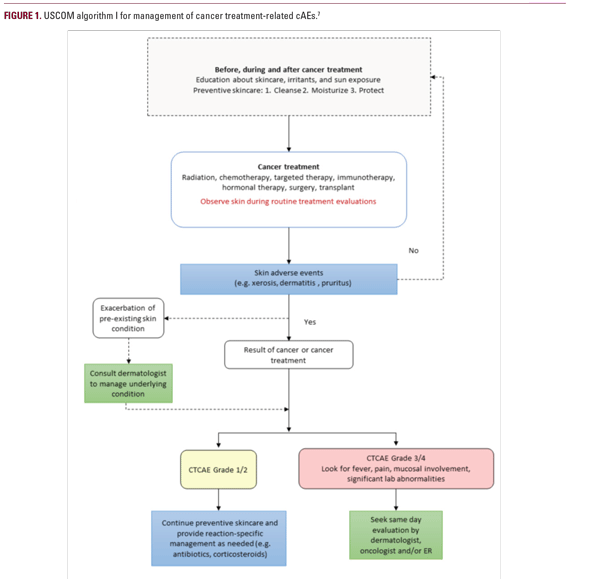
tools for preventing and managing RD by providing uniform guidelines that lead to a reduction in cAEs.7 An algorithm was previously published to treat cAEs, reduce their incidence, and maintain healthy skin using general measures and over-thecounter agents (OTC; Figure 1).7 This algorithm aims to inform all healthcare providers treating oncology patients, including physicians, nurses, radiation therapists, pharmacists, and advanced providers.7 The next logical step was to develop a pragmatic, decision-based algorithm on skincare management to standardize clinical practices, RT-related acute RD severity, and ultimately improve patient comfort during RT.
Multifactorial etiologies of radiation dermatitis
On a biological level, RD is defined as a cutaneous inflammatory reaction induced by exposure to biologically effective levels of ionizing radiation.6-10,23-30 The mechanisms associated with






